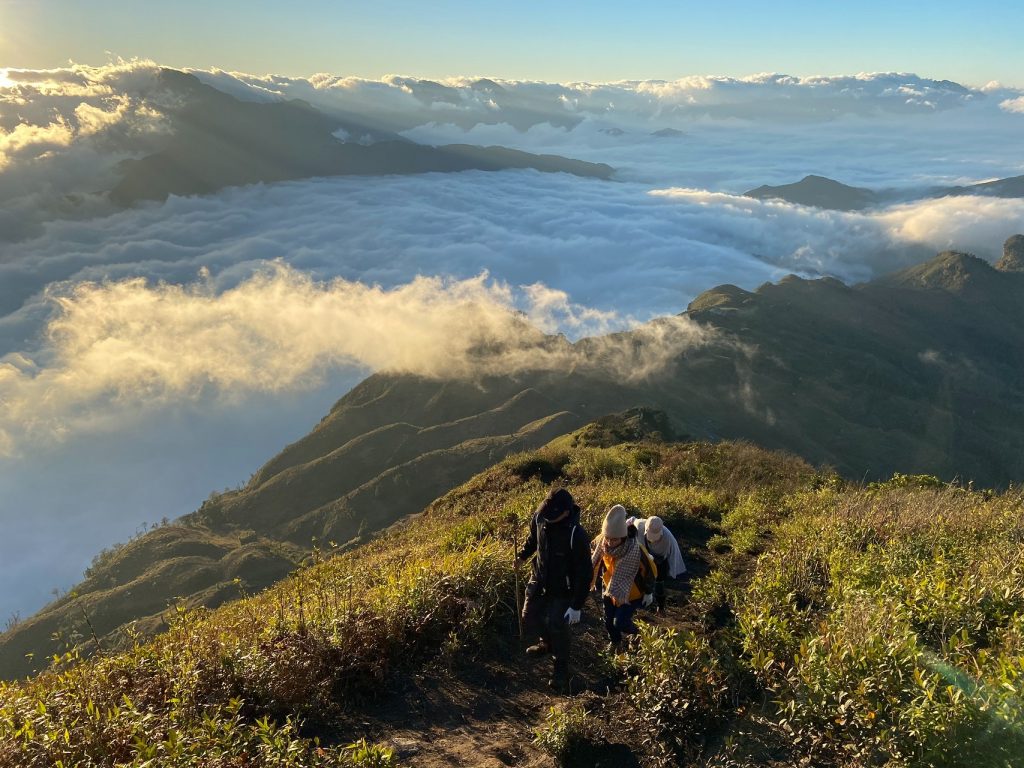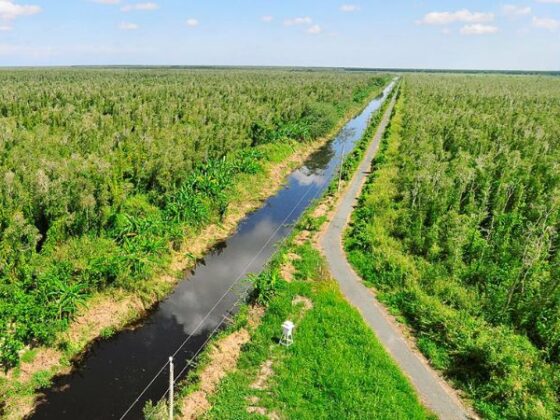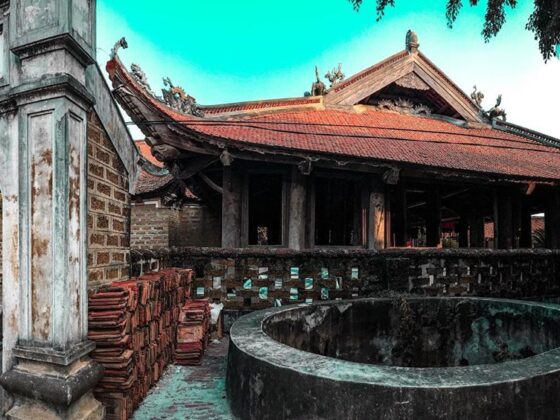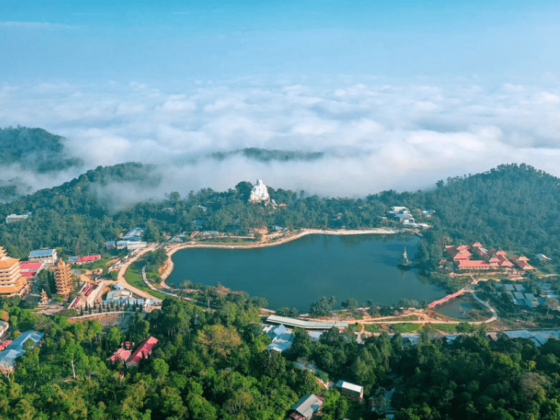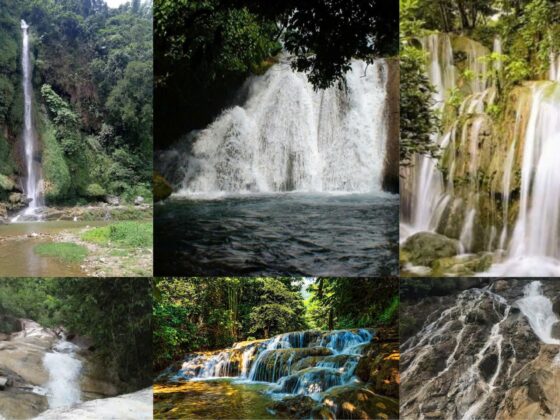Table of Contents Show
There are mountains that challenge you with height, and there are those that challenge you with remoteness. Lảo Thẩn, often called the “roof of Y Tý,” is both. Rising 2,860 meters near the border with China, this mountain in Lào Cai Province remains one of Vietnam’s hidden giants. Its long ridge, sharp and untamed, is like the back of a sleeping dragon stretching across the horizon. A Lảo Thẩn mountain trek is a test of your limits — not just of endurance, but of solitude.
Read more interesting posts here:
- A Coastal Paradise: The Ultimate Guide to Beach Camping in Vietnam
- Embracing the Rain: Your Ultimate Guide to Vietnam Wet Season Travel
- Market Trails: A Trekker’s Journey to the Vibrant Bắc Hà Sunday Market
What to expect on the Lảo Thẩn mountain trek

The trail for the Lảo Thẩn mountain begins in the H’Mông villages of Y Tý, where terraced fields cascade like green steps down into misty valleys. Soon the farmland gives way to bamboo groves, and the climb begins in earnest. The ascent is steep and steady, with few flat stretches to catch your breath. Each turn brings another ridge, each ridge another climb.
Physically, the Lảo Thẩn mountain trek demands persistence more than speed. The ridges are exposed, with wind cutting sharp against your face, and the thin air at altitude makes every step heavier. The soil shifts underfoot, red and loose, forcing you to balance carefully as the valley drops steeply to either side. It feels like walking a blade’s edge, the dragon’s spine itself. By the time the sun dips low, your legs ache and your lungs burn, but the horizon opens into something unforgettable.
Camping on the “roof of Y Tý”

That night, I camped with my H’Mông guides on a grassy ledge high above the clouds during the Lảo Thẩn mountain trek. As the fire crackled, silence wrapped around us like a blanket. No car horns, no village dogs, no hum of electricity, just the occasional whisper of wind and the steady breathing of the earth. When I crawled into my tent, the world outside was a sea of white, the clouds glowing faintly under the moon. I slept with the strange, humbling sensation of floating, suspended between mountain and sky.
The importance of local guides on the Lảo Thẩn mountain trek

The guides told me stories as we ate bowls of steaming noodles by the fire. During the Lảo Thẩn mountain trek, they spoke of Lảo Thẩn as a sacred place, a ridge where ancestors watch over the valleys and where the spirits of the land test the courage of those who climb. One guide, smiling through the smoke, explained that the mountain is not conquered but borrowed, every step is taken with the mountain’s permission. These words settled into me more deeply than the food, and I realized that for the H’Mông, climbing is not sport but a relationship, a dialogue with the land.

It must be said clearly: do not attempt the Lảo Thẩn mountain trek alone. The wild of Vietnam can be unforgiving even to the most seasoned adventurer. Trails are steep, weather changes without warning, and the remoteness makes rescue nearly impossible. Always utilize and support local guides. They depend on this livelihood, and in return, they give more than safety, they share knowledge of plants, wildlife, and culture that deepens every step. Without them, the mountain is only a climb. With them, it becomes a story.
Planning your Lảo Thẩn mountain trek

At dawn, I unzipped my tent and stepped into another world. During the Lảo Thẩn mountain trek, the clouds below stretched like an ocean without end, ridges rising from it like islands. The sun’s first light painted everything in gold, and for a moment, time stopped. The exhaustion, the steep climbs, the cold wind, all of it felt small compared to this view, this silence, this peace.
Lảo Thẩn is closest to Lào Cai City, the provincial capital and gateway to Sa Pa. From Lào Cai, it’s a rugged half-day journey by road into Y Tý, the small frontier commune where the trek begins. The remoteness is part of its charm, fewer crowds, fewer footprints, more silence. The best season is from October to April, when skies are clear and the sea of clouds most often forms.

The Lảo Thẩn mountain trek is not as famous as Fansipan or as crowded as Hà Giang’s passes, but perhaps that is its gift. It remains raw, untamed, a place where silence is still possible and where the edge of Vietnam meets the edge of yourself.
When I descended back into the valley, the dragon’s spine fading behind me, I carried more than tired muscles. I carried the lesson that the wildest ridges are not meant to be conquered, but respected. On Lảo Thẩn, you don’t just walk a trail, you walk a line between worlds, where the mountain, the clouds, and your own spirit meet in fragile, fleeting balance.
Conclusion
In the end, the Lảo Thẩn mountain trek teaches a profound lesson: the wildest ridges are not meant to be conquered, but respected. On Lảo Thẩn, you don’t just walk a trail, you walk a line between worlds, where the mountain, the clouds, and your own spirit meet in fragile, fleeting balance. It remains raw, untamed, a place where silence is still possible and where the edge of Vietnam meets the edge of yourself.
Ready to discover your own trail tale? Join our community of explorers in the ExoTrails Facebook Group and follow the ExoTrails Fanpage for daily inspiration and trail tips!
FAQs
What is Lảo Thẩn mountain known for?
Lảo Thẩn is known as the “roof of Y Tý” and is famous for its stunning “sea of clouds” views from its long, exposed ridge, often called the “Dragon’s Spine.”
Is it safe to hike in Y Tý alone?
No, it is extremely unsafe to hike Lảo Thẩn or other mountains in Y Tý alone due to the remote location, steep terrain, and unpredictable weather. Always hire a local guide.
How do I get to Y Tý from Sapa or Lào Cai?
Y Tý is accessible by a rugged road from Lào Cai City, which is the main transport hub for the region. The journey takes approximately 4-5 hours by car or motorbike.
What is the best month to hike Lảo Thẩn?
The best time to hike Lảo Thẩn is during the dry season, from October to April, when the skies are clearer and your chances of seeing the sea of clouds are highest.
What is the “roof of Y Tý”?
“The roof of Y Tý” is the nickname for Lảo Thẩn mountain, as it is the highest and most prominent peak in the Y Tý commune of Lào Cai province.

